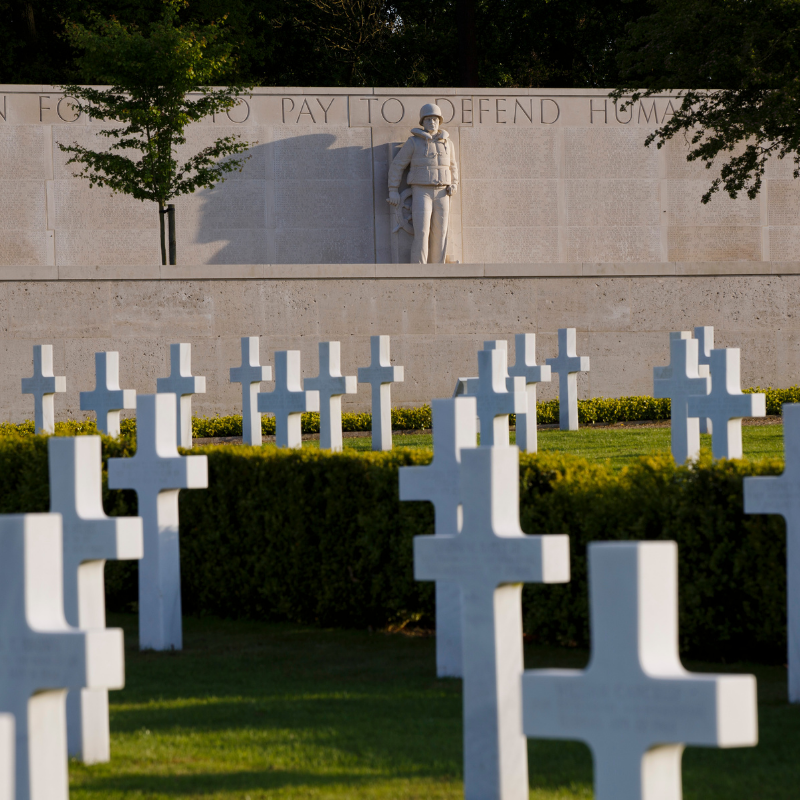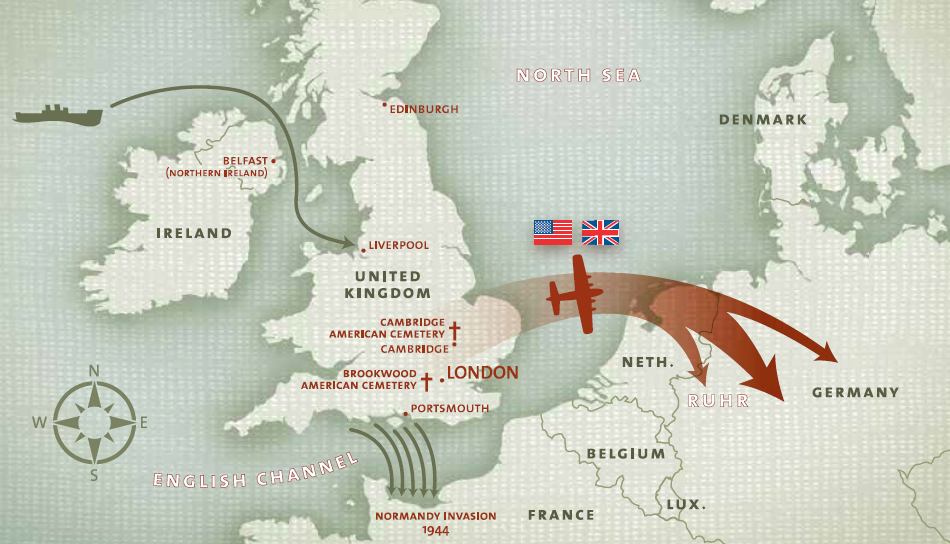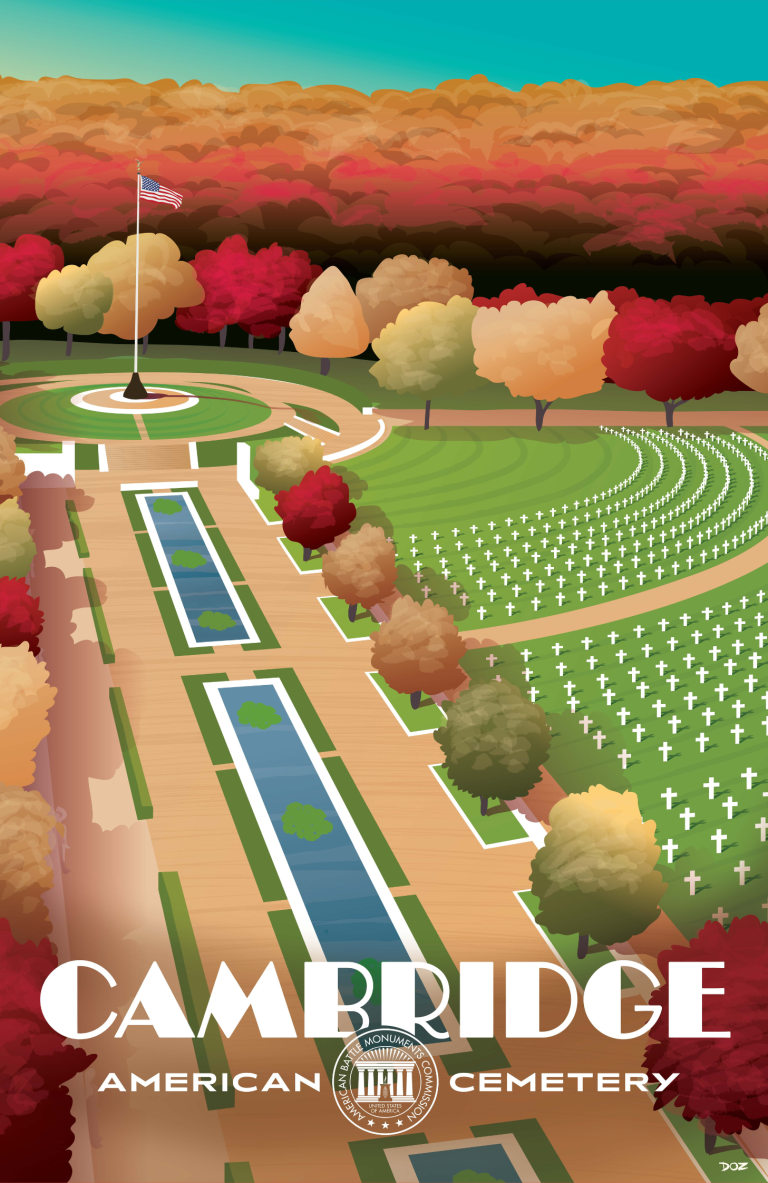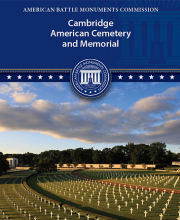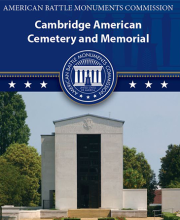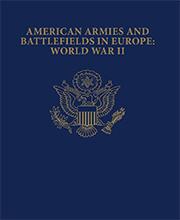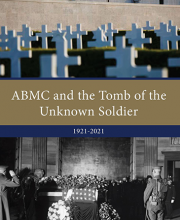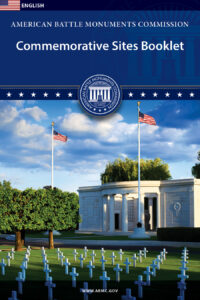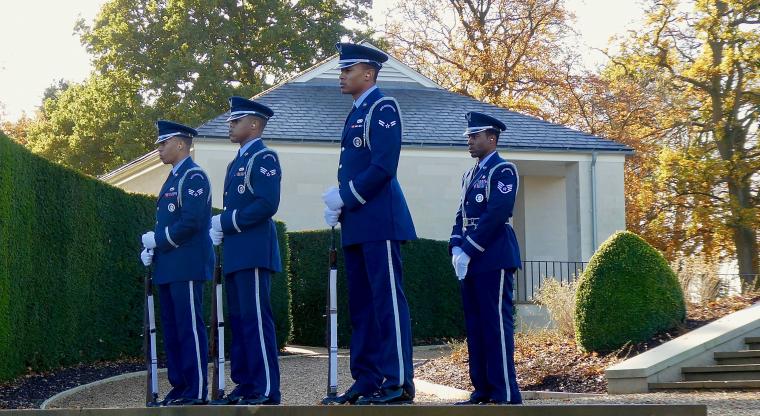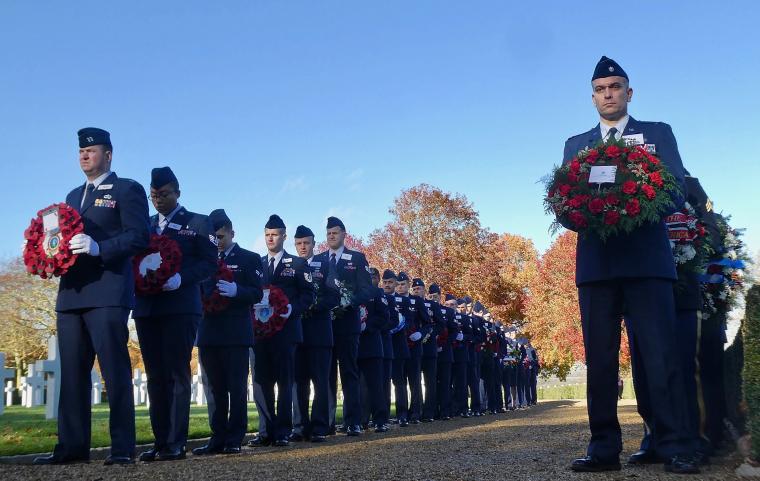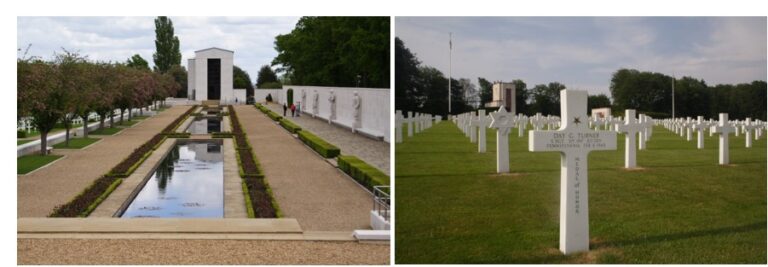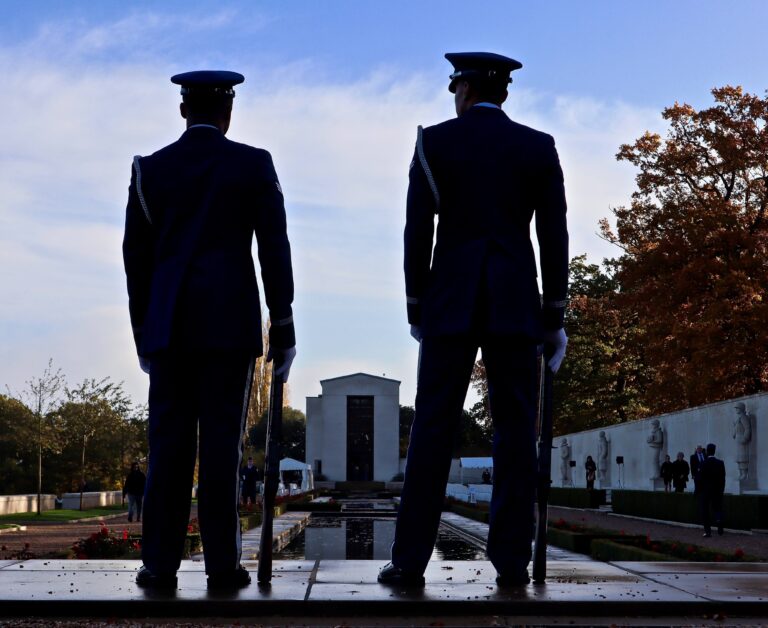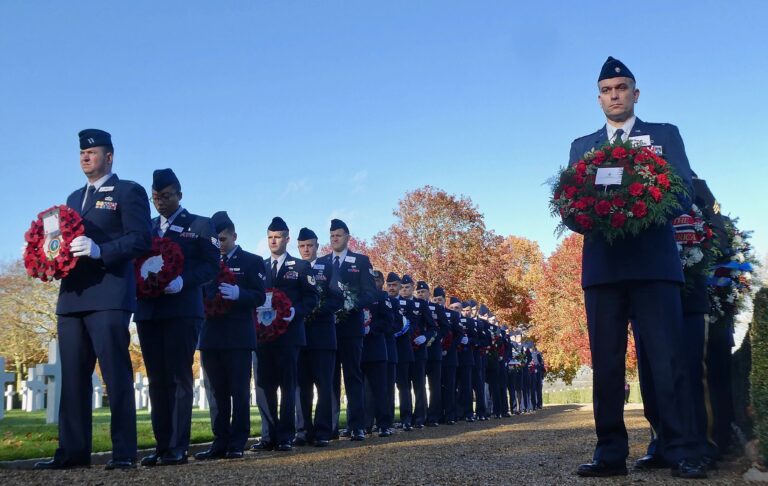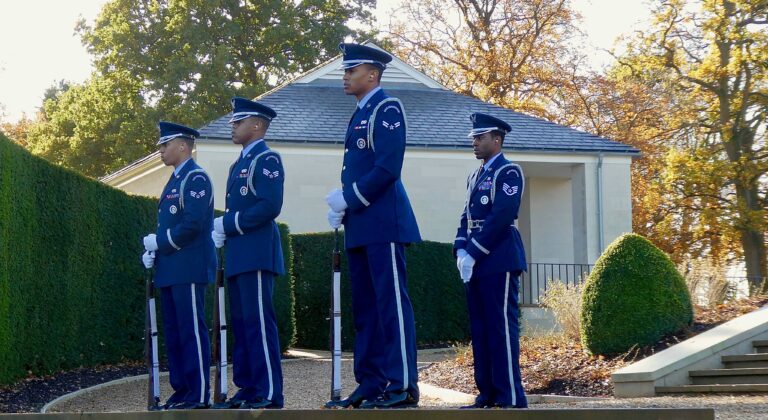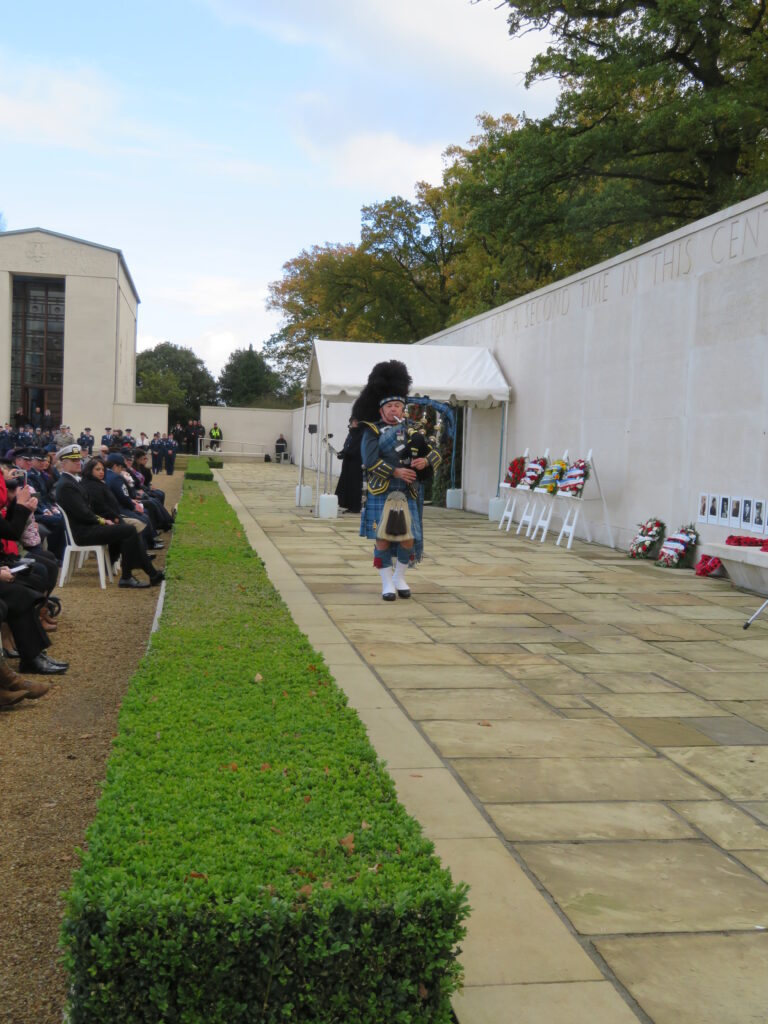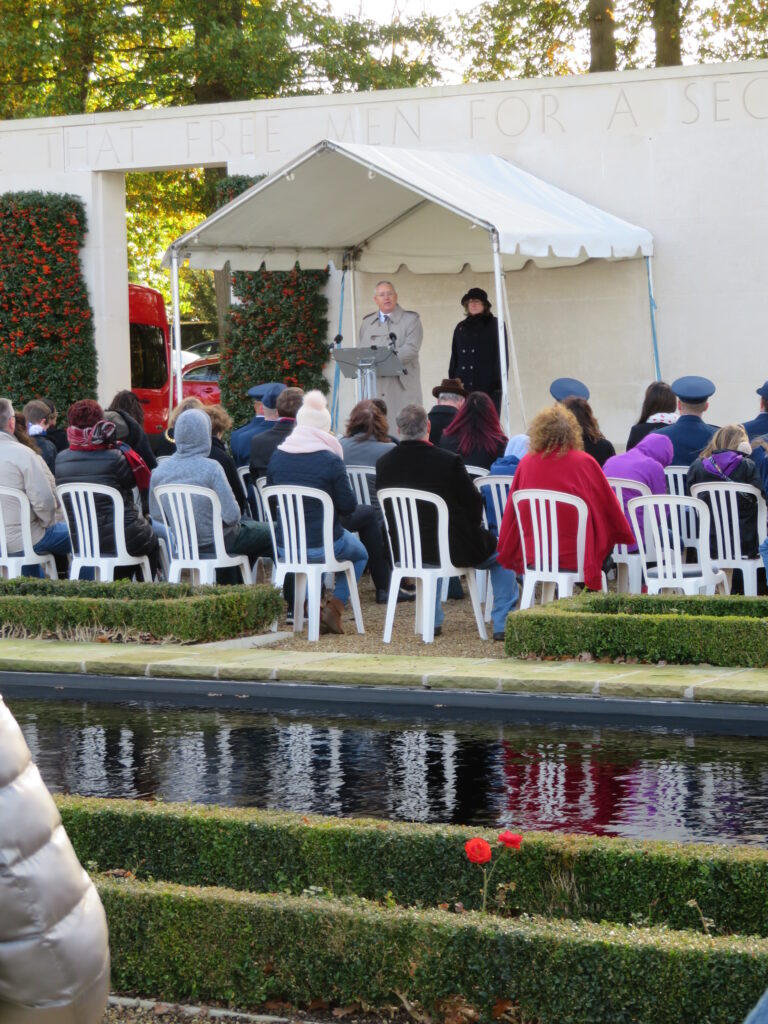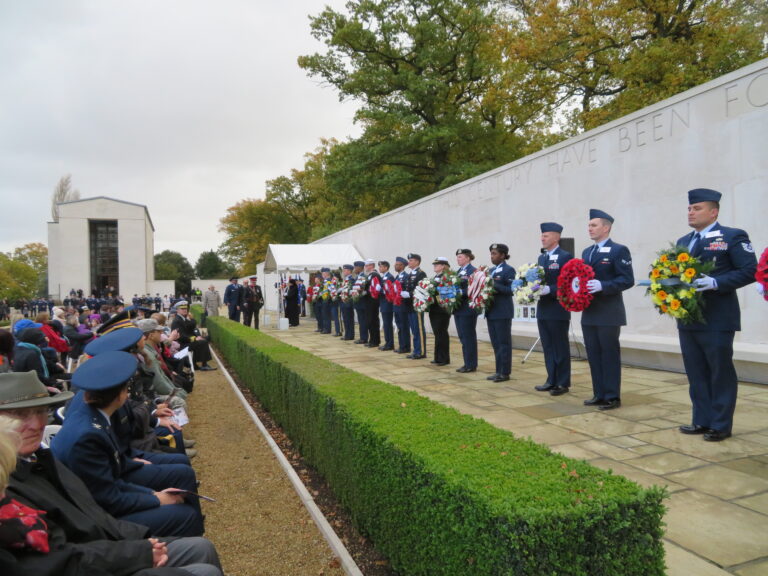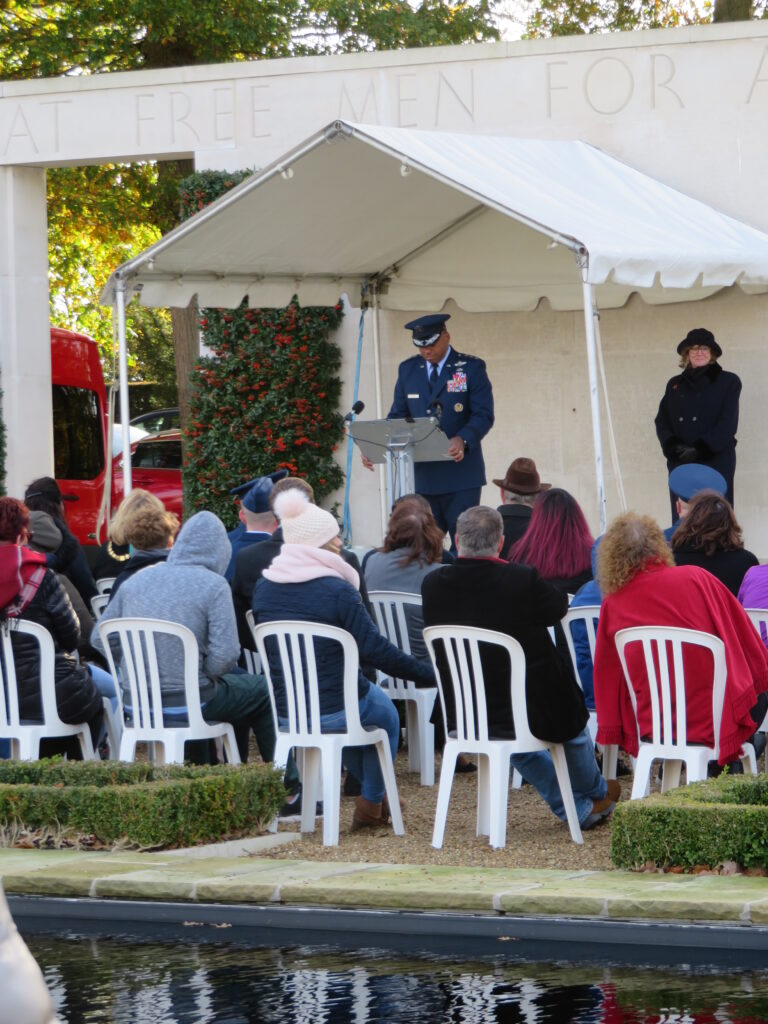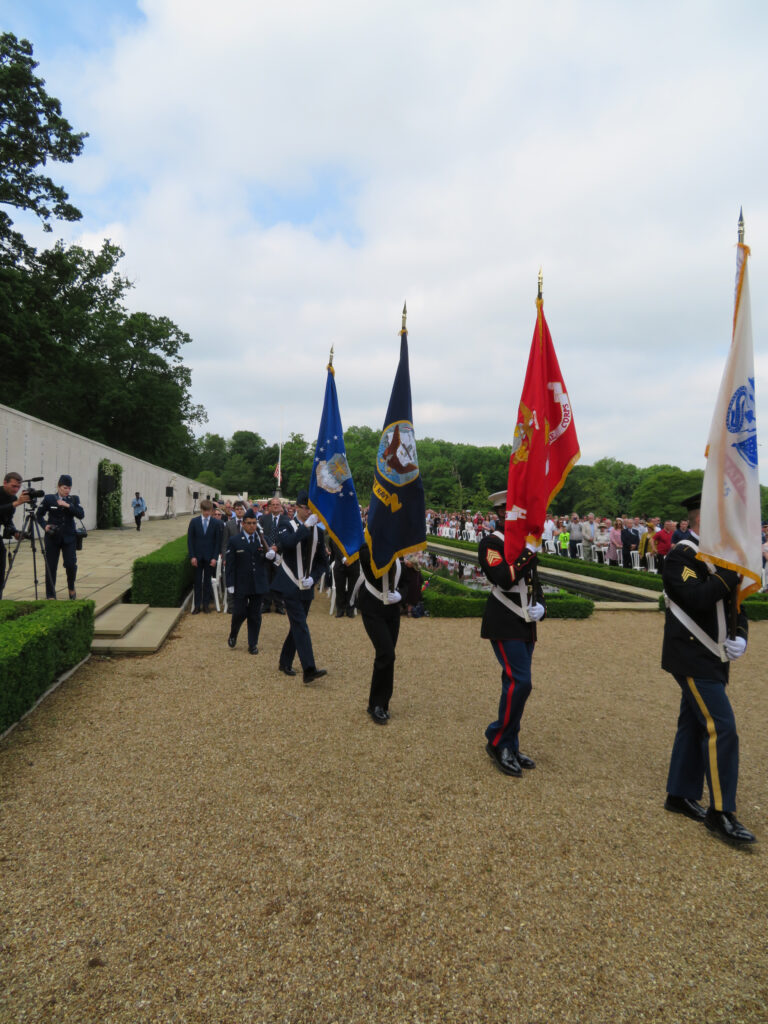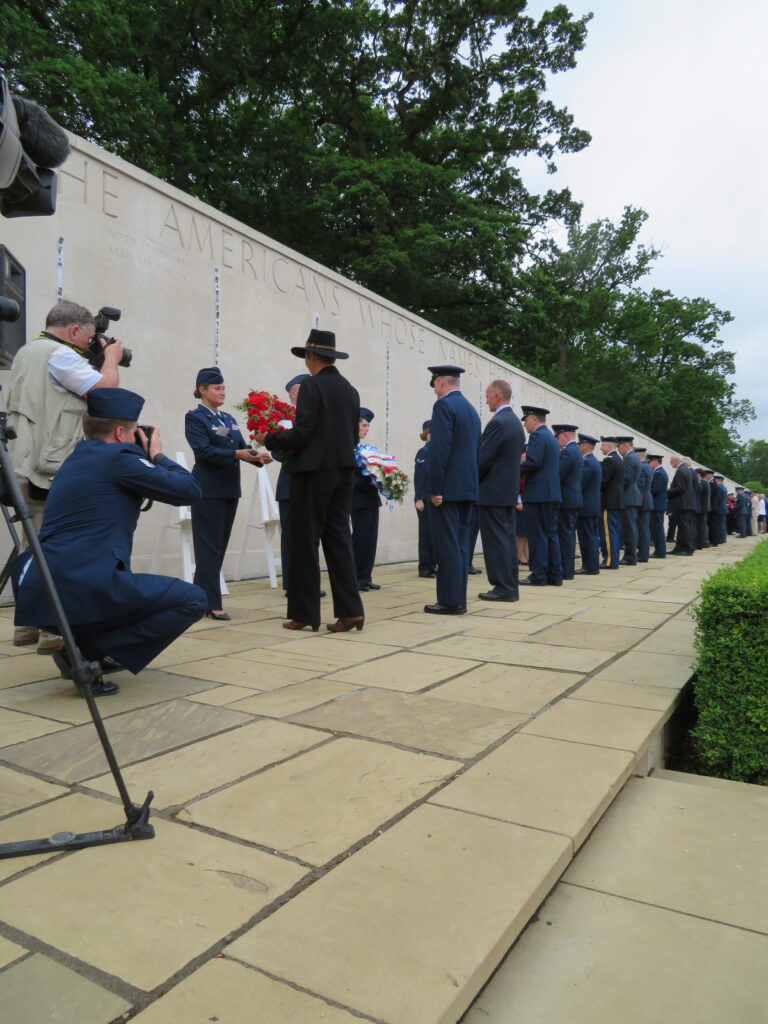The Cambridge American Cemetery and Memorial site in England, 30.5 acres in total, was donated by the University of Cambridge.
It lies on a slope with the west and south sides framed by woodland. The cemetery contains the remains of 3,811 of our war dead; 5,127 names are recorded on the Walls of the Missing. Rosettes mark the names of those since recovered and identified. Most died in the Battle of the Atlantic or in the strategic air bombardment of northwest Europe.
From the flagpole platform near the main entrance, the great mall with its reflecting pools stretches eastward. It is from the mall that the wide, sweeping curve of the burial area across the lawn is best appreciated. Along the south side are the Walls of the Missing, and at the far end is the memorial with a chapel, two huge military maps, stained glass windows bearing the state seals and military decorations, and a mosaic ceiling memorial honoring the dead of our air forces.
A new, 4,000-square-foot visitor center opened in May 2014. Through interpretive exhibits that incorporate personal stories, photographs, films, and interactive displays, visitors will gain a better understanding of this critical campaign that contributed to the Allied victory in Europe during World War II.
2023- Access Statement for Cambridge American Cemetery
 An official website of the United States government. Here's how you know.
An official website of the United States government. Here's how you know. 